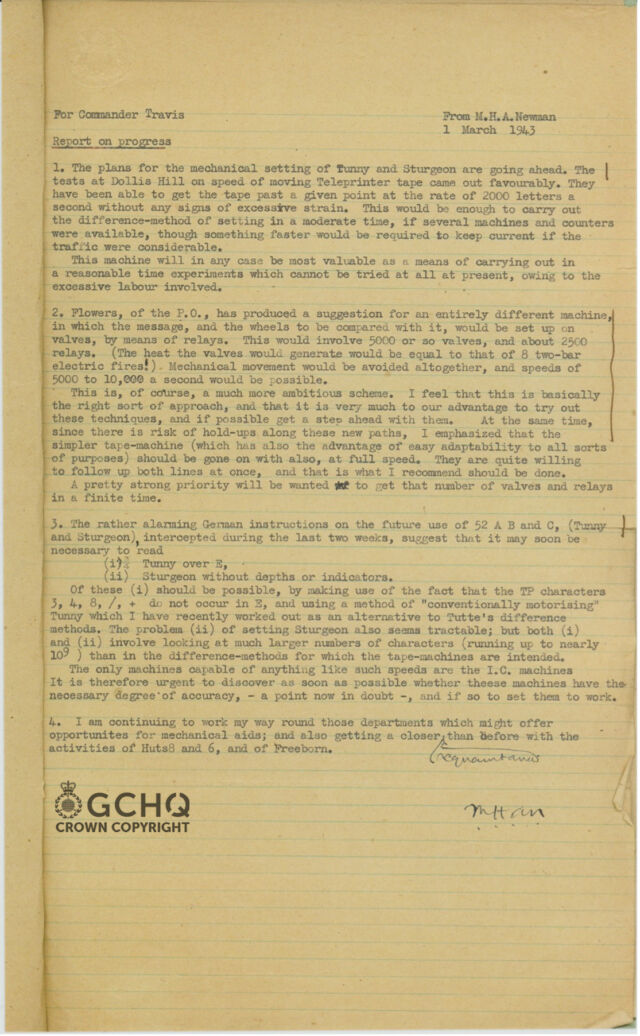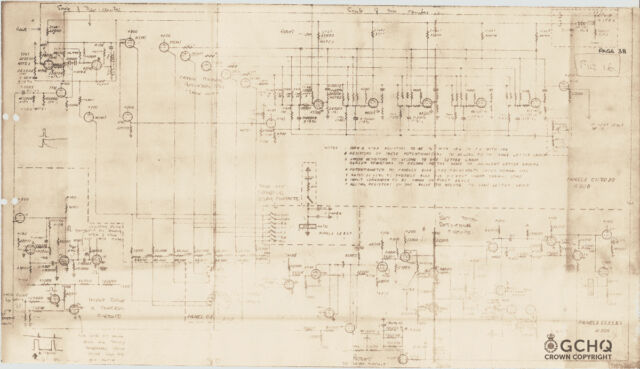

80 years later, GCHQ releases new images of Nazi code-breaking computer
source link: https://arstechnica.com/gadgets/2024/01/new-images-of-secret-nazi-busting-computer-emerge-on-80th-anniversary/
Go to the source link to view the article. You can view the picture content, updated content and better typesetting reading experience. If the link is broken, please click the button below to view the snapshot at that time.

Cracking the Lorenz cipher —
80 years later, GCHQ releases new images of Nazi code-breaking computer
GCHQ unveils new docs on Colossus, a 1943 marvel that let allies "read Hitler's mind."
Benj Edwards - 1/18/2024, 4:48 PM

On Thursday, UK's Government Communications Headquarters (GCHQ) announced the release of previously unseen images and documents related to Colossus, one of the first digital computers. The release marks the 80th anniversary of the code-breaking machines that significantly aided the Allied forces during World War II. While some in the public knew of the computers earlier, the UK did not formally acknowledge the project's existence until the 2000s.
Colossus was not one computer but a series of computers developed by British scientists between 1943 and 1945. These 2-meter-tall electronic beasts played an instrumental role in breaking the Lorenz cipher, a code used for communications between high-ranking German officials in occupied Europe. The computers were said to have allowed allies to "read Hitler's mind," according to The Sydney Morning Herald.
-
A photo of a surviving Colossus computer in 1963.
-
A photo of a surviving Colossus computer in 1963.
-
A diagram of some parts of the Colossus computer system.
The technology behind Colossus was highly innovative for its time. Tommy Flowers, the engineer behind its construction, used over 2,500 vacuum tubes to create logic gates, a precursor to the semiconductor-based electronic circuits found in modern computers. While 1945's ENIAC was long considered the clear front-runner in digital computing, the revelation of Colossus' earlier existence repositioned it in computing history. (However, it's important to note that ENIAC was a general-purpose computer, and Colossus was not.)
AdvertisementGCHQ's public sharing of archival documents includes several photos of the computer at different periods and a letter discussing Tommy Flowers' groundbreaking work that references the interception of "rather alarming German instructions."
Following the war, the UK government issued orders for the destruction of most Colossus machines, and Flowers was required to turn over all related documentation. The GCHQ claims that the Colossus tech "was so effective, its functionality was still in use by us until the early 1960s."
In the GCHQ press release, Director Anne Keast-Butler paid tribute to Colossus' place in the UK's lineage of technological innovation: "The creativity, ingenuity and dedication shown by Tommy Flowers and his team to keep the country safe were as crucial to GCHQ then as today."
Of 10 Colossus machines, only two survived the 1940s, only to be later dismantled in the 1960s. After starting work on a rebuilding project in the 1990s, engineer Tony Sale completed a 90 percent operational reconstruction of a Colossus Mark 2 in 2007 that is now displayed at the National Museum of Computing at Bletchley Park.
Andrew Herbert, chairman of trustees at The National Museum of Computing, told the GCHQ that Colossus was a key part of the Allies' success during World War II. "From a technical perspective, Colossus was an important precursor of the modern electronic digital computer, and many of those who used Colossus at Bletchley Park went on to become important pioneers and leaders of British computing in the decades following the war, often leading the world in their work," he said in the release. "We are proud to join with GCHQ in celebrating this significant date in the Colossus legacy."
Recommend
About Joyk
Aggregate valuable and interesting links.
Joyk means Joy of geeK

